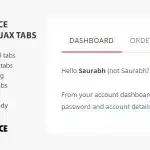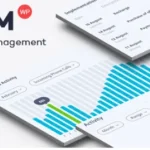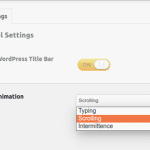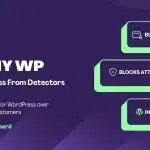WooCommerce Cost of Goods Nulled serves as an essential tool for online retailers aiming to monitor and control the expenses linked to their inventory. This article will discuss the various features and advantages of WooCommerce Cost of Goods, determine its target audience, evaluate its strengths and weaknesses, and compare it with other well-known options.
Successfully managing an online store goes beyond mere product sales; it necessitates careful financial oversight to gauge profitability. The WooCommerce Cost of Goods plugin empowers store owners to keep track of the costs incurred for goods sold, yielding vital insights into their financial standing. In this article, we will take a closer look at WooCommerce Cost of Goods, underscoring its notable features and benefits for e-commerce enterprises.
1. Features and Customization Options
WooCommerce Cost of Goods Free Download equips store owners with an extensive array of features that facilitate efficient management and monitoring of product costs. A key feature is the ability to input cost prices for products and their variations directly via the WooCommerce dashboard, simplifying the process of updating costs as needed.
This plugin also generates in-depth reports detailing profit margins for individual products, categories, and the entire store. Such reports are essential for recognizing the most lucrative items and pinpointing areas where costs might be trimmed. The profit and loss reports produced by WooCommerce Cost of Goods furnish insights into the broader financial health of the business, guiding store owners in making educated decisions.
Another major advantage is the automatic calculation of profit margins. By entering the cost of goods, the plugin computes profit margins based on the sale price, presenting store owners with a transparent view of their profitability. This functionality is invaluable for businesses that handle numerous products and variations.
2. Enhancing Financial Management
WooCommerce Cost of Goods significantly enhances financial oversight by delivering precise and detailed insights into the cost framework of your inventory. By monitoring the costs of goods sold, business owners can uncover the actual profitability of their products and make informed decisions to boost their margins.
This plugin assists with inventory management by enabling store owners to evaluate the worth of their inventory based on cost prices. This data is vital for maintaining an accurate balance sheet and ensuring that stock levels are aligned with demand without excessive overstock.
Furthermore, WooCommerce Cost of Goods integrates smoothly with other WooCommerce plugins and extensions, offering a unified approach to managing all facets of your e-commerce operations. This integration guarantees that cost information remains consistent across multiple reports and analytics, allowing store owners to maintain a comprehensive perspective on their financial performance.
3. Simplifying Store Management
Overseeing an e-commerce business encompasses a variety of tasks, and WooCommerce Cost of Goods streamlines the tracking and management of product costs. The plugin’s intuitive interface simplifies the process of entering and updating cost prices, ensuring data accuracy and currency.
The plugin also features bulk editing capabilities for cost prices, making it particularly advantageous for stores with extensive inventories. This functionality saves valuable time and minimizes the likelihood of errors, allowing store owners to concentrate on other critical areas of their business.
Cost of Goods Nulled offers extensive support and documentation, ensuring that users maximize the plugin’s potential. Whether you’re initiating the setup or refining an existing configuration, the all-encompassing support resources will assist you throughout the journey.
Who is it Ideal For?
WooCommerce Cost of Goods is particularly suited for a diverse range of e-commerce businesses seeking to enhance their financial management. It is especially advantageous for:
- Small to Medium-Sized Businesses: Firms requiring a budget-friendly method to monitor product costs and profitability can utilize the extensive features of WooCommerce Cost of Goods.
- Large E-commerce Stores: Companies with broad product assortments can take advantage of the plugin’s bulk editing and comprehensive reporting capabilities.
- Retailers and Wholesalers: Businesses managing significant inventory volumes can leverage the plugin to control inventory costs and optimize stock levels.
- Subscription-Based Services: Companies providing subscription products can track the costs associated with goods to ensure their pricing strategies are both sustainable and profitable.
Pros and Cons
Pros
- Comprehensive Tracking: Enables detailed monitoring of product costs and profitability.
- Detailed Reporting: Offers crucial insights into profit margins and financial health.
- Automation: Automatically determines profit margins based on cost and selling price.
- User-Friendly Interface: Simple process for entering and updating cost prices.
- Integration: Seamlessly connects with other WooCommerce plugins and extensions.
Cons
- Learning Curve: The initial setup and configuration might take some time to fully grasp.
- Cost: The plugin could represent a considerable expense for smaller enterprises.
- Potential Compatibility Issues: There may be conflicts with other plugins or themes that require troubleshooting.
- Limited Advanced Features: Might lack certain sophisticated financial analysis tools found in specialized accounting programs.
Comparing WooCommerce Cost of Goods with Popular Alternatives
1. ProfitWell
ProfitWell is a sophisticated analytics platform tailored for subscription-based enterprises. It delivers in-depth insights into metrics such as churn, lifetime value, and customer acquisition costs. Although ProfitWell provides advanced analytics, it may be excessive for businesses primarily focused on tracking the costs of goods sold. WooCommerce Cost of Goods presents a more specialized solution for overseeing product costs and profitability.
2. Xero
Xero is a robust accounting software that delivers comprehensive features for financial management, including inventory monitoring and cost of goods sold. While Xero offers an all-encompassing solution for various accounting needs, it can be intricate and costly for smaller businesses. WooCommerce Cost of Goods offers a more direct and budget-friendly alternative for e-commerce store owners.
3. QuickBooks Commerce
QuickBooks Commerce is another powerful accounting solution that integrates with e-commerce platforms to manage inventory and track costs. While it has advanced features for larger enterprises, it could be overly complicated for smaller online shops. WooCommerce Cost of Goods provides a more straightforward and focused approach for monitoring product costs within WooCommerce.
4. Cost of Goods Sold (COGS) for WooCommerce
Cost of Goods Sold (COGS) for WooCommerce serves as a direct alternative that offers comparable features for tracking product costs. While both plugins yield valuable insights into profitability, WooCommerce Cost of Goods may present more advanced reporting and integration capabilities. Evaluating the specific features and pricing of both plugins can help determine the most suitable option for your business needs.
WooCommerce Cost of Goods is an invaluable plugin that assists e-commerce businesses in tracking and managing the cost of goods sold, providing crucial insights into profitability and financial performance. Its extensive features, intuitive interface, and seamless integration with WooCommerce make it a significant addition to any online shop. While numerous other popular alternatives exist, WooCommerce Cost of Goods distinguishes itself through its targeted focus and user-friendliness. Whether you’re a small business proprietor or overseeing a large e-commerce venture, Cost of Goods Nulled equips you with the necessary tools to enhance your financial management and secure long-term success.
Version history
Version 2.13.3 Released on 2024.10.09
- HPOS incompatibility notice was displaying accidentally
Version 2.13.2 Released on 2024.10.07
- Update format of line item cost in CSV exports so that the value can then be imported natively
Version 2.13.1 Released on 2024.02.27
- Make sure order object is available before querying items to set costs
Version 2.13.0 Released on 2023.05.10
- Add compatibility for WooCommerce High Performance Order Storage (HPOS)
Version 2.12.0 Released on 2022.12.01
- Require PHP 7.4 and WordPress 5.6
![(v2.13.3) WooCommerce Cost of Goods Nulled [by SkyVerge]](https://1001wordpress.com/wp-content/uploads/2024/10/v2133-WooCommerce-Cost-of-Goods-Nulled-by-SkyVerge.jpg)









